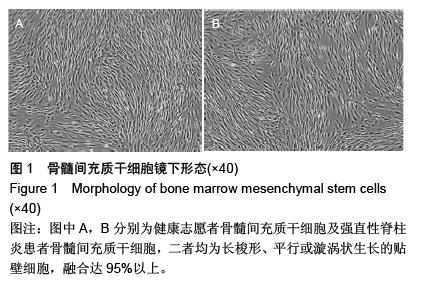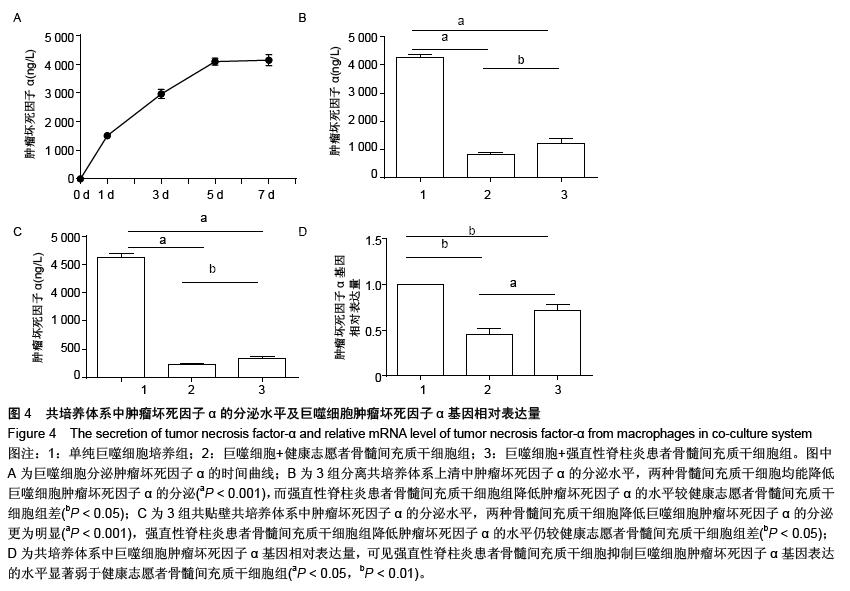| [1] Golder V, Schachna L. Ankylosing spondylitis: an update. Aust Fam Physician. 2013;42(11):780-784.
[2] Singh G, Lawrence A, Agarwal V, et al. Higher prevalence of extra-articular manifestations in ankylosing spondylitis with peripheral arthritis. J Clin Rheumatol. 2008;14(5): 264-266.
[3] Castro-Santos P, Gutiérrez MA, Díaz-Peña R. Genetics of ankylosing spondylitis. Rev Med Chil. 2014;142(9): 1165-1173.
[4] Rashid T, Ebringer A. Ankylosing spondylitis is linked to Klebsiella--the evidence. Clin Rheumatol. 2007;26(6): 858-864.
[5] Rashid T, Wilson C, Ebringer A. The link between ankylosing spondylitis, Crohn's disease, Klebsiella, and starch consumption. Clin Dev Immunol. 2013;2013:872632.
[6] Lou YJ, Jin J, Mai WY. Ankylosing spondylitis presenting with macrophage activation syndrome. Clin Rheumatol. 2007; 26(11):1929-1930.
[7] De Keyser F, Van den Bosch F, Mielants H. Anti-TNF-alpha therapy in ankylosing spondylitis. Cytokine. 2006;33(5): 294-298.
[8] Sari ?, Öztürk MA, Akkoç N. Treatment of ankylosing spondylitis. Turk J Med Sci. 2015;45(2):416-430.
[9] van der Linden S. Issues in the treatment of ankylosing spondylitis with non-steroidal anti-inflammatory drugs. Wien Med Wochenschr. 2008;158(7-8):195-199.
[10] Braun J, Sieper J. Therapy of ankylosing spondylitis and other spondyloarthritides: established medical treatment, anti-TNF-alpha therapy and other novel approaches. Arthritis Res. 2002;4(5):307-321.
[11] Braun J, Baraliakos X, Heldmann F, et al. Tumor necrosis factor alpha antagonists in the treatment of axial spondyloarthritis. Expert Opin Investig Drugs. 2014;23(5):647-659..
[12] Tong Q, Cai Q, de Mooij T, et al. Adverse events of anti-tumor necrosis factor α therapy in ankylosing spondylitis. PLoS One. 2015;10(3):e0119897.
[13] Le Blanc K, Mougiakakos D. Multipotent mesenchymal stromal cells and the innate immune system. Nat Rev Immunol. 2012;12(5):383-396.
[14] Chinnadurai R, Ng S, Velu V, et al. Challenges in animal modelling of mesenchymal stromal cell therapy for inflammatory bowel disease. World J Gastroenterol. 2015; 21(16):4779-4787.
[15] 阮光萍,姚翔,刘菊芬,等.人脐带间充质干细胞移植治疗系统性红斑狼疮[J].中国组织工程研究,2015,19(14):2172-2178.
[16] 赖勤,余莲,邱永荣,等. 脐血间充质干细胞移植治疗多发性肌炎/皮肌炎:Th细胞因子的变化[J].中国组织工程研究,2015, 19(14): 2186-2191.
[17] Ben-Ami E, Berrih-Aknin S, Miller A. Mesenchymal stem cells as an immunomodulatory therapeutic strategy for autoimmune diseases. Autoimmun Rev. 2011;10(7):410-415.
[18] Wang P, Li Y, Huang L, et al. Effects and safety of allogenic mesenchymal stem cell intravenous infusion in active ankylosing spondylitis patients who failed NSAIDs: a 20-week clinical trial. Cell Transplant. 2014;23(10):1293-303.
[19] Lee TH, Lee GW, Ziff EB, et al. Isolation and characterization of eight tumor necrosis factor-induced gene sequences from human fibroblasts. Mol Cell Biol. 1990;10(5):1982-1988.
[20] Qi Y, Jiang D, Sindrilaru A, et al. TSG-6 released from intradermally injected mesenchymal stem cells accelerates wound healing and reduces tissue fibrosis in murine full-thickness skin wounds. J Invest Dermatol. 2014;134(2): 526-537.
[21] Wang N, Li Q, Zhang L, et al. Mesenchymal stem cells attenuate peritoneal injury through secretion of TSG-6. PLoS One. 2012;7(8):e43768.
[22] Chen M, Li X, Zhang X, et al. The inhibitory effect of mesenchymal stem cell on blood-brain barrier disruption following intracerebral hemorrhage in rats: contribution of TSG-6. J Neuroinflammation. 2015;12:61.
[23] Liu Y, Zhang R, Yan K, et al. Mesenchymal stem cells inhibit lipopolysaccharide-induced inflammatory responses of BV2 microglial cells through TSG-6. J Neuroinflammation. 2014; 11:135.
[24] Oh JY, Lee RH, Yu JM, et al. Intravenous mesenchymal stem cells prevented rejection of allogeneic corneal transplants by aborting the early inflammatory response. Mol Ther. 2012; 20(11):2143-2152.
[25] Lee RH, Yu JM, Foskett AM, et al. TSG-6 as a biomarker to predict efficacy of human mesenchymal stem/progenitor cells (hMSCs) in modulating sterile inflammation in vivo. Proc Natl Acad Sci U S A. 2014;111(47):16766-16771.
[26] Mahoney DJ, Swales C, Athanasou NA, et al. TSG-6 inhibits osteoclast activity via an autocrine mechanism and is functionally synergistic with osteoprotegerin. Arthritis Rheum. 2011;63(4):1034-1043.
[27] Inoue I, Ikeda R, Tsukahara S. Current topics in pharmacological research on bone metabolism: Promyelotic leukemia zinc finger (PLZF) and tumor necrosis factor-alpha-stimulated gene 6 (TSG-6) identified by gene expression analysis play roles in the pathogenesis of ossification of the posterior longitudinal ligament. J Pharmacol Sci. 2006;100(3):205-210.
[28] Wang H, Wang X, Li X, et al. CD68(+)HLA-DR(+) M1-like macrophages promote motility of HCC cells via NF-κB/FAK pathway. Cancer Lett. 2014;345(1):91-99.
[29] Daikh DI, Chen PP. Advances in managing ankylosing spondylitis. F1000Prime Rep. 2014;6:78.
[30] Märker-Hermann E.Therapy of psoriatic arthritis.Z Rheumatol. 2013;72(8):784-790.
[31] François RJ, Neure L, Sieper J, et al. Immunohistological examination of open sacroiliac biopsies of patients with ankylosing spondylitis: detection of tumour necrosis factor alpha in two patients with early disease and transforming growth factor beta in three more advanced cases. Ann Rheum Dis. 2006;65(6):713-720.
[32] Gratacós J, Collado A, Filella X, et al. Serum cytokines (IL-6, TNF-alpha, IL-1 beta and IFN-gamma) in ankylosing spondylitis: a close correlation between serum IL-6 and disease activity and severity. Br J Rheumatol. 1994;33(10): 927-931.
[33] Yi H, Kang KY, Kim Y, et al. Human adipose-derived mesenchymal stem cells attenuate collagen antibody-induced autoimmune arthritis by inducing expression of FCGIIB receptors. BMC Musculoskelet Disord. 2015;16:170.
[34] Guo Z, Zhou X, Li J, et al. Mesenchymal stem cells reprogram host macrophages to attenuate obliterative bronchiolitis in murine orthotopic tracheal transplantation. Int Immunopharmacol. 2013;15(4):726-734.
[35] Davey-Ranasinghe N, Deodhar A. Osteoporosis and vertebral fractures in ankylosing spondylitis. Curr Opin Rheumatol. 2013;25(4):509-516. |
.jpg)

.jpg)



.jpg)
.jpg)